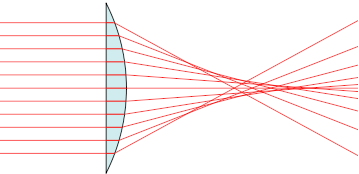
Aberration is a condition that prevents light from being brought into sharp focus, preventing the formation of a clear image. Aberration in simple lenses can be divided into seven types. The effects usually increase with increases in aperture, or in angle of field.
Spherical aberration
Variation in the focal length of a spherical lens from center to edge due to
its shape - generally affects all parts of the image, including the center.
 |
| Incoming rays which lie far from the optical axis are focused in front of those more on axis. |
Coma
The image of a point source of light cannot be brought into focus, but has
instead a comet shape. Occurs for a parabolic lens, when the object lies off
axis, and increases with offset from optical axis.
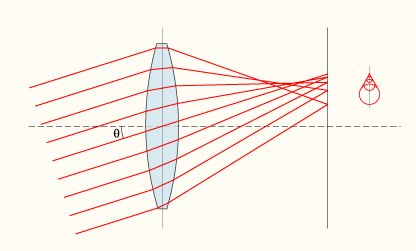 |
| Comatic aberration is evident for this parabolic lens, and an image of an off-axis point source (right) appears elongated. |
Astigmatism
Rays in some directions are focused less sharply than rays in other
directions.
 |
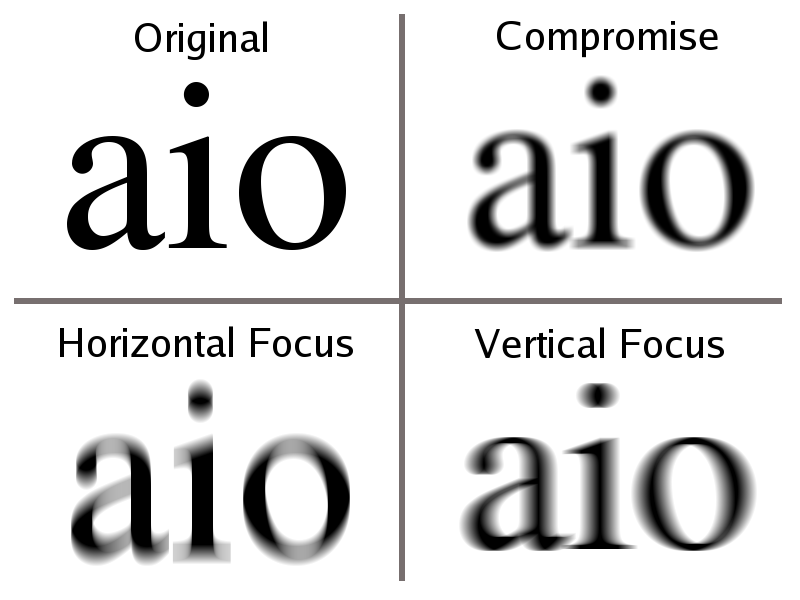 |
| Off-axis sources are distorted, even at a single wavelength, along a particular axis. | |
Chromatic aberration
Light of different wavelengths comes into focus in front of and behind the
focal plane, resulting in points exhibiting a rainbow-like halo and reduction
in sharpness.
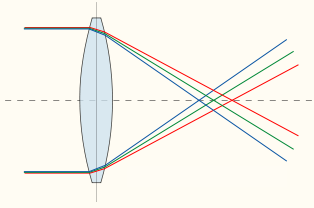 |
| The distance between the lens and the focal point is a function of wavelength. |
Curvilinear distortion
Distortion consisting of curved lines.
Field curvature
The image is incorrectly curved.
Lateral, or transverse, chromatic aberration
Variation in the magnification at the sides of a lens.
Spot diagrams are graphs that show where rays from a point object will fall on the image surface (they must fall close together if the lens is to form a good image). The graph is usually highly magnified (as if you looked at the image spot through a microscope), and its shape can indicate the type and amount of aberration in the lens.
Aberration can be reduced by using a corrector set of optics. In the Cassegrain telescope, a common design for optical astronomy, a second mirror is used and various combinations of shapes for the primary and secondary mirrors allow the aberrations to be adjusted. The classical Cassegrain uses a parabola and a hyperbola.
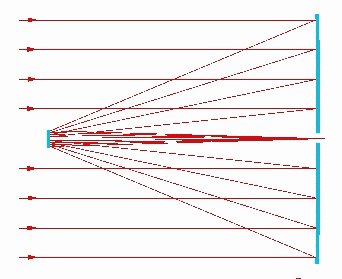 |
| [XMM] |